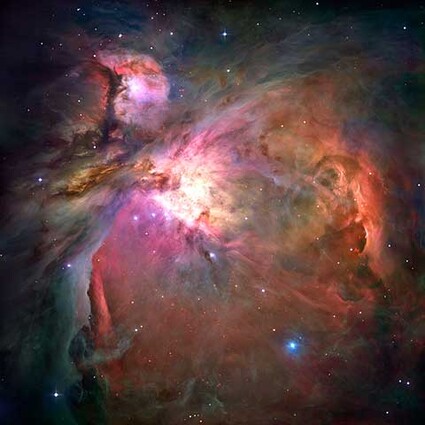Stars over Sisters 12/03/2019
Last updated 12/4/2019 at Noon

M42 is a diffuse nebula located at a distance of 1,344 light-years in the constellation of Orion where new stars are being born.\f0\fs24 \cf0 photo provided
After the Big Dipper, Orion is probably the most recognizable arrangement of star patterns. Its size, comprising 594 square degrees of the sky, and bright stars simply make this constellation nearly unavoidable in an outdoor nighttime setting. It is located in the east southeast at about 8 p.m. local time, climbing higher in the sky as the night progresses. Orion is bordered by Taurus and Eridanus to the west and Monoceros to the east.
Orion’s two brightest stars are Rigel, a blue supergiant, and Betelgeuse, a red supergiant, and are the fifth and eighth brightest stars in the sky, respectively, not counting the sun. Rigel marks the hunter’s left foot while Betelgeuse signifies his right shoulder. Although evolving differently, both stars are believed to be approximately 8 million years old.
These two stars also play a role in defining the wintertime asterisms of the Winter Triangle and the Winter Hexagon. Betelgeuse teams up with Sirius in Canis Major and Procyon in Canis Minor to form the large triangle. Rigel is part of an even bigger hexagon, along with Aldebaran in Taurus, Capella in Auriga, Pollux in Gemini, Procyon and Sirius.
Embedded in the sword that hangs below Orion’s belt is M42, one of the brightest diffuse nebulae in the entire sky, easily visible to the naked eye. It is a region of interstellar gas and dust where new stars are currently being born and is located at a distance of about 1,344 light-years. The nebula is truly an impressive sight through almost any telescope.
Orion is rich in sky lore.
One account of Greek mythology states that Orion was a talented hunter who would brag about being able to get rid of all the wild animals on Earth.
His boasting made Gaia, the Earth goddess, angry so she sent out a scorpion to battle and defeat Orion.
When the two started to fight, Orion realized he wouldn’t be able to overcome the scorpion so he decided to escape by jumping into the sea.
Apollo then ordered his sister Artemis, goddess of hunting, to slay Orion by shooting him.
But after doing so, she became upset and asked the gods to bring him back to life.
Her request was denied.
Artemis then decided to put a picture of Orion in the sky so she could always see him.
Winter officially arrives in the Northern Hemisphere on Saturday, December 21 at 8:19 p.m. At that time the sun will reach its southern-most latitude on its annual journey through the skies, resulting in the shortest day of the year.
Early in the month Jupiter, Venus and Saturn are nicely aligned low in the western sky, but before Christmas the two gas giants will disappear into the sun’s glare, leaving Venus to rule the evening skies for months to come. Mercury and Mars are currently morning objects and can be seen in the predawn skies. The final two planets, Neptune in Aquarius and Uranus in Pisces, are evening planets but are too dim to be seen with the naked eye.
As December begins the moon is waxing (brightening), a condition that will continue until the 11th when the full Cold Moon arrives. From this point our only natural satellite starts to wane (gradually dims) until going dark on the 25th at new moon. What a timely Christmas gift to serious stargazers everywhere!
















Reader Comments(0)